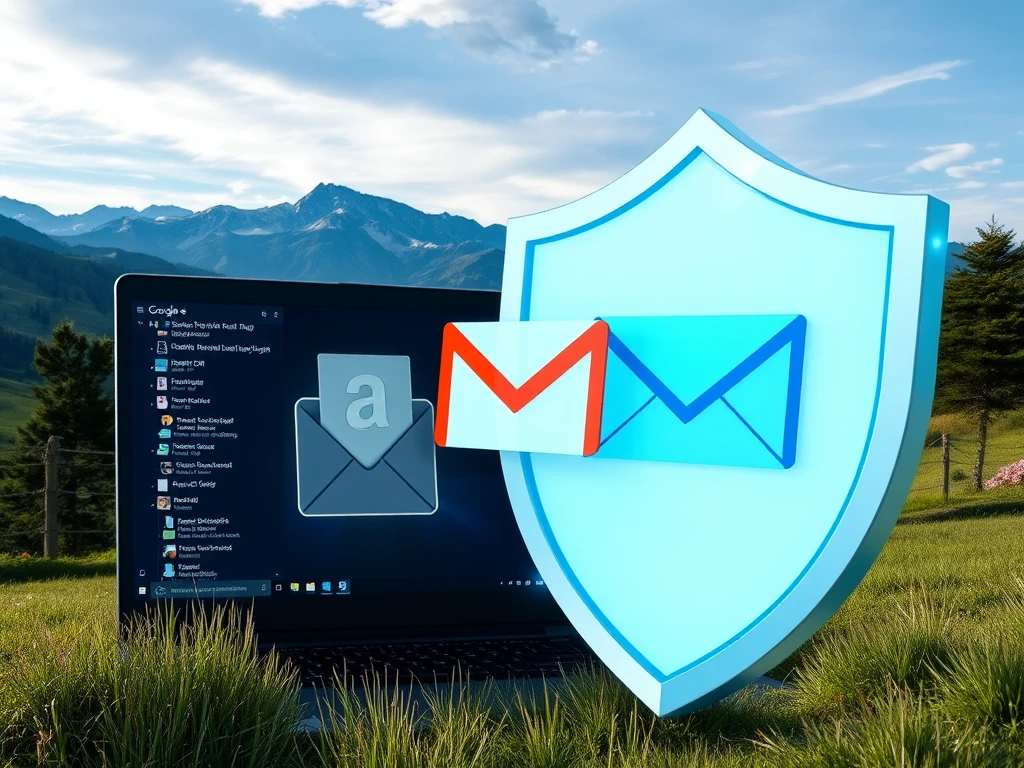Phishing Attack: How to Spot and Defeat the Dangerous Google Subpoena Scam

In the world of cryptocurrency and digital assets, security is paramount. While we often focus on wallet protection and exchange security, it’s crucial not to overlook the fundamental layers of online safety, like your email and online accounts. A sophisticated threat known as the Google subpoena scam is targeting users, exploiting trust in major platforms. Understanding this specific phishing attack is vital for anyone serious about their online security.
What is the Google Subpoena Scam and How Does it Work?
The Google subpoena scam is a deceptive phishing tactic where fraudsters impersonate Google. They aim to trick you into believing Google has received a legal request (a subpoena) for your data and that you need to take urgent action. The core mechanism involves sending a fake email scam that looks remarkably legitimate.
Here’s a breakdown of the typical steps:
- **The Fake Email:** You receive an email, often appearing to be from a Google address (like [email protected]), with alarming subject lines like “Security Alert” or “Legal Notice.”
- **The False Claim:** The email claims Google has been served with a subpoena requiring your account data (emails, documents, history).
- **The Urgent Call to Action:** It pressures you to click a link to view “case materials.”
- **The Phishing Site:** The link leads to a fake website, often hosted on legitimate services like Google Sites, designed to mimic a real Google login or support page.
- **The Data Grab:** The fake site prompts you to enter your Google username and password, compromising your account security.
A particularly concerning aspect is how attackers bypass email security checks. They exploit vulnerabilities like DKIM replay attacks, where a legitimate email’s digital signature is reused in a fraudulent message, making the fake email appear authentic even to sophisticated filters.
Recognizing the Red Flags: Is This Email a Google Subpoena Scam?
Despite the sophistication, there are clear indicators that an email claiming to be a legal notice from Google is likely a phishing attack. Being vigilant is your best defense against this email scam.
Look for these tell-tale signs:
- **Suspicious Sender Address:** While it may look like a Google address, examine it closely. Scammers often use subtle misspellings or variations (e.g., goog1e.com).
- **Urgent and Threatening Language:** Legitimate companies like Google don’t use scare tactics or threaten immediate account suspension in initial contact about legal matters.
- **Requests for Sensitive Information:** Google will NEVER ask for your password, 2FA codes, or financial details via email. This is a major red flag for any email scam.
- **Poor Quality Content:** Watch for grammatical errors, awkward phrasing, or inconsistent formatting that doesn’t match Google’s usual communication style.
- **Suspicious Links:** Before clicking, hover your mouse over any link to see the actual URL. If it doesn’t point to a legitimate google.com domain (be wary of subdomains used deceptively), don’t click.
- **Lack of Formal Process:** Real legal subpoenas follow strict procedures and are not initiated via a random email asking for personal data or immediate clicks.
How Google Actually Handles Legal Requests vs. the Phishing Attack
It’s important to understand the stark difference between a real legal request handled by Google and the fraudulent Google subpoena scam. Google has stringent processes to protect user data and privacy.
Here’s how Google typically handles valid legal requests:
| Aspect | Real Google Process | Fake Google Subpoena Scam |
|---|---|---|
| Initiation | Formal legal channels (law enforcement, court order) | Unsolicited email |
| Notification Method | Often notified directly within your Google Account dashboard (e.g., Security section) or via official, verifiable Google channels. | Random email asking you to click a link. |
| Request for Info | Google reviews the legal request internally; they do NOT ask *you* for your password or personal details to comply. | Requests your password or sensitive data via a fake website link. |
| Urgency/Threats | Process follows legal timelines; no scare tactics used in notifications. | Uses urgent, threatening language to pressure immediate action. |
| Link/Attachments | Notifications direct you to check your account or provide information on official channels, not click suspicious links. | Includes malicious links to fake login pages or sites. |
Google is transparent about legal requests, publishing data in their Transparency Report. A real notification about a subpoena wouldn’t bypass these established, secure methods.
Defeat the Scam: Actionable Steps for Better Online Security
Protecting your account security from a phishing attack like the Google subpoena scam requires a proactive approach. If you receive a suspicious email:
- **Stay Calm:** Scammers rely on panic. Don’t react impulsively.
- **Do NOT Engage:** Do not click links, open attachments, or reply to the email.
- **Verify Directly:** Go to Google’s official website (type the address yourself, don’t use links from the email) and log in to check your account notifications or security dashboard.
- **Report the Email:** Forward the suspicious email to Google’s phishing reporting address and consider reporting it to relevant government agencies in your region (like [email protected] in the UK or the FTC/IC3 in the US).
- **Strengthen Your Security:** Immediately update your Google account password to a strong, unique one. Enable or reinforce Two-Factor Authentication (2FA) or switch to Passkeys for enhanced account security.
- **If Compromised:** If you clicked a link or shared information, change your password *immediately*. Review your account for suspicious activity. If financial details were shared, contact your bank or financial institutions using their official contact information. Report the incident to law enforcement if necessary.
Beyond reacting to suspicious emails, bolster your general online security:
- **Be Skeptical:** Treat all unexpected emails, especially those demanding urgent action or containing legal claims, with caution.
- **Inspect Email Details:** Always check the full sender email address and domain.
- **Hover Over Links:** Preview URLs before clicking.
- **Use Security Tools:** Utilize advanced spam filters and email security gateways.
- **Regular Security Review:** Periodically check your Google Account’s security settings and linked applications.
- **Stay Informed:** Follow trusted cybersecurity news sources to learn about new threats.
- **Educate Others:** Share knowledge about scams to protect your network.
Summary
The Google subpoena scam is a sophisticated phishing attack that leverages technical tricks like DKIM bypass and psychological manipulation to compromise your account security. By impersonating Google and creating a false sense of legal urgency, attackers attempt to steal your credentials or sensitive data. Recognizing the signs – fake sender addresses, urgent threats, requests for sensitive information, and suspicious links – is crucial. Remember that Google handles legal requests through formal channels and will notify you securely within your account, not via a random, demanding email. By staying skeptical, verifying requests independently, securing your accounts with strong passwords and 2FA, and reporting suspicious activity, you can effectively defeat this dangerous email scam and protect your vital online security.








